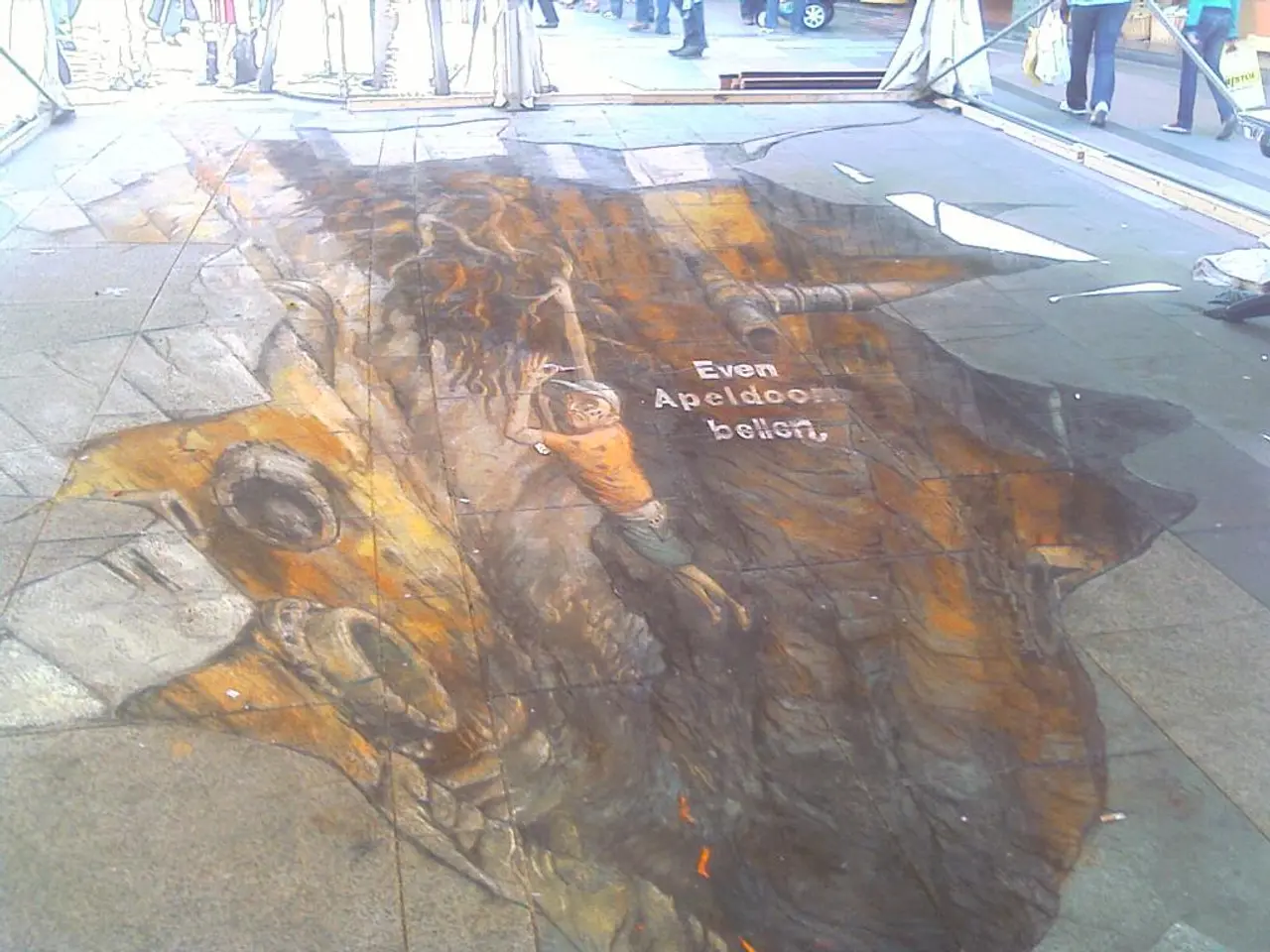Microsoft's Artificial Intelligence, Copilot 3D, Transforms a Lone Image into a Detailed 3D Model
Microsoft Copilot Leverages GPT-5 for Enhanced Productivity
Microsoft's Copilot, a popular productivity tool, has integrated GPT-5 as its underlying AI model, enhancing its capabilities for productivity and reasoning within the Copilot environment[1][2].
As of August 2025, GPT-5 is the intelligence engine behind Copilot's responses. The integration uses a dynamic model-routing system that chooses between GPT-5’s variants based on the complexity of user prompts[1][2]. For simple, routine questions, a high-throughput GPT-5 model provides quick answers, while for complex or open-ended queries, a deeper reasoning GPT-5 model performs more thoughtful, context-aware responses[1][2]. The real-time router that selects the appropriate GPT-5 sub-model balances response speed, depth of reasoning, and computational efficiency[3][5].
This relationship means that Microsoft Copilot is not just powered by GPT-5 but leverages its full model family and intelligent routing to optimize user experience across Microsoft 365 apps, developer tools (like GitHub Copilot), and even custom agent workflows via Copilot Studio and Azure AI Foundry[3][5]. Licensed Microsoft 365 Copilot users get priority access to GPT-5 capabilities with organizational data integration, ensuring privacy and security compliance[1][2].
Meanwhile, Copilot 3D, a separate tool within Microsoft's Copilot suite, is available to users with personal Microsoft accounts. It allows users to create 3D models from a single flat image[8]. The models generated are in the GLB format, a widely used 3D content format[9]. While users can edit these models in several popular programs, they may require conversion for specific tools[9].
Copilot 3D's performance can vary, with electronic devices with screens causing occasional confusion[10]. To use the tool, users must upload source files for 3D content creation in JPG or PNG format, with a maximum size of 10MB[11]. Copilot 3D's code of conduct restricts the use of copyrighted material, and misuse could lead to account suspension[12].
Copilot Labs, an experimental program from Microsoft for testing new features, includes features like Copilot Vision, Copilot Actions, and Think Deeper[7]. Think Deeper was initially available through Copilot Labs but has since graduated[4]. Older models like GPT-4 will be deprecated, meaning they won't be available for use[6].
Recently, the latest OpenAI model, GPT-5, has been made available through Copilot[3]. However, GPT-5 has received criticism for being less personable compared to its predecessors[6]. On the other hand, Copilot Appearance, a feature that allows users to customize the appearance of their Copilot, is available to a subset of users in the United States, the United Kingdom, and Canada[5].
In summary, Microsoft Copilot is effectively the enterprise and productivity interface built on top of GPT-5, using GPT-5’s AI to deliver enhanced, context-aware assistance in real time within Microsoft’s ecosystem. Copilot 3D, another tool within the Copilot suite, allows users to create 3D models from a single flat image, with the generated models ready for use in games, animation, 3D printing, and virtual reality.
[1] Microsoft (2025). "Microsoft Copilot Integrates GPT-5 for Enhanced Productivity." [Online] Available at: https://news.microsoft.com/2025/08/01/microsoft-copilot-integrates-gpt-5-for-enhanced-productivity/
[2] Microsoft (2025). "What's New with Microsoft Copilot?" [Online] Available at: https://www.microsoft.com/en-us/copilot/whats-new
[3] OpenAI (2025). "GPT-5 Now Available on Copilot." [Online] Available at: https://openai.com/blog/gpt-5-copilot/
[4] Microsoft (2025). "Think Deeper Graduates from Copilot Labs." [Online] Available at: https://www.microsoft.com/en-us/copilot/think-deeper
[5] Microsoft (2025). "Copilot Appearance Now Available." [Online] Available at: https://www.microsoft.com/en-us/copilot/appearance
[6] TechCrunch (2025). "GPT-5: The New AI Model from OpenAI, Now on Copilot." [Online] Available at: https://techcrunch.com/2025/08/01/gpt-5-the-new-ai-model-from-openai-now-on-copilot/
[7] Microsoft (2025). "Copilot Labs: Microsoft's Playground for New Ideas." [Online] Available at: https://www.microsoft.com/en-us/copilot/labs
[8] Microsoft (2025). "Copilot 3D: Transform Flat Images into 3D Models." [Online] Available at: https://www.microsoft.com/en-us/copilot/3d
[9] Autodesk (2025). "Working with GLB Files: A Comprehensive Guide." [Online] Available at: https://knowledge.autodesk.com/support/3ds-max/learn-explore/caas/CloudHelp/cloudhelp/2023/EN-US/3DSMAX/files/GUID-F9418384-D951-4B9A-8A8E-9381033A6E35-htm.html
[10] Microsoft (2025). "Troubleshooting Copilot 3D Performance Issues." [Online] Available at: https://support.microsoft.com/en-us/copilot/3d-performance
[11] Microsoft (2025). "Uploading Source Files for 3D Content Creation." [Online] Available at: https://www.microsoft.com/en-us/copilot/3d-source-files
[12] Microsoft (2025). "Copilot 3D Code of Conduct." [Online] Available at: https://www.microsoft.com/en-us/copilot/3d-code-of-conduct
- Microsoft Copilot, integrated with the GPT-5 AI model, is not only utilized in Microsoft 365 apps and developer tools like GitHub Copilot, but also in custom agent workflows via Copilot Studio and Azure AI Foundry.
- Within the Microsoft Copilot suite, a separate tool called Copilot 3D allows users to create 3D models from a single flat image, with the generated models in the GLB format, a widely used 3D content format.
- There is a dynamic model-routing system in Copilot that chooses between GPT-5’s variants based on the complexity of user prompts, using high-throughput models for simple, routine questions and deeper reasoning models for complex or open-ended queries.
- Licensed Microsoft 365 Copilot users benefit from priority access to GPT-5 capabilities and organizational data integration, ensuring privacy and security compliance.
- While GPT-5 has been integrated into Copilot, some users have expressed concerns about its less personable nature compared to its predecessors, such as GPT-4, which will be deprecated in the future.




